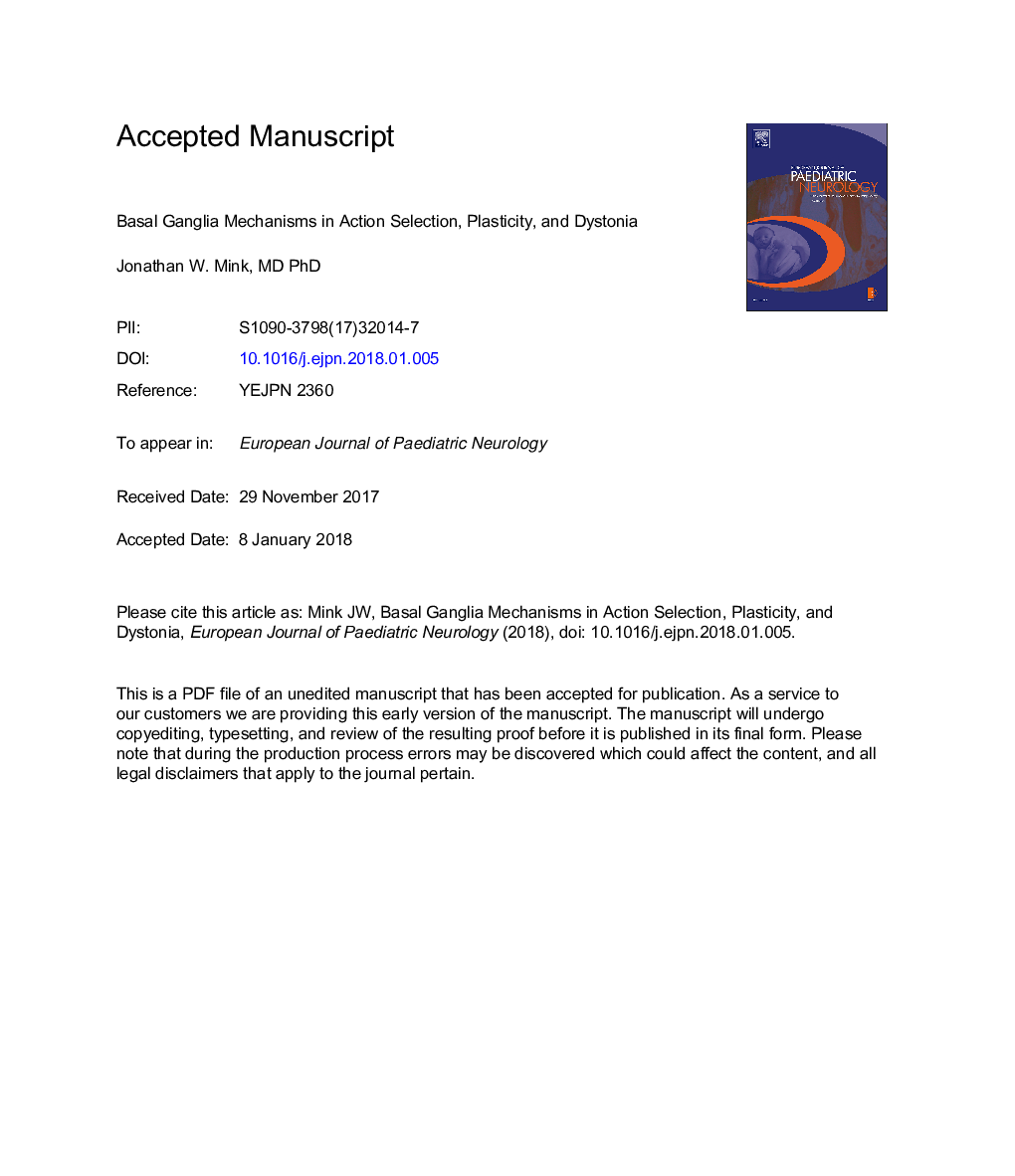| Article ID | Journal | Published Year | Pages | File Type |
|---|---|---|---|---|
| 8684399 | European Journal of Paediatric Neurology | 2018 | 11 Pages |
Abstract
Basal ganglia circuits are organized to selected desired actions and to inhibit potentially competing unwanted actions. This is accomplished through a complex circuitry that is modified through development and learning. Mechanisms of neural plasticity underlying these modifications are increasingly understood, but new mechanisms continue to be discovered. Dystonia, a movement disorder characterized by involuntary muscle contractions that cause abnormal postures and movements. Emerging evidence points to important links between mechanisms of plasticity and the manifestations of dystonia. Investigation of these mechanisms has improved understanding of the action of currently used medication and is informing the development of new treatments.
Related Topics
Life Sciences
Neuroscience
Developmental Neuroscience
Authors
Jonathan W. Mink,
